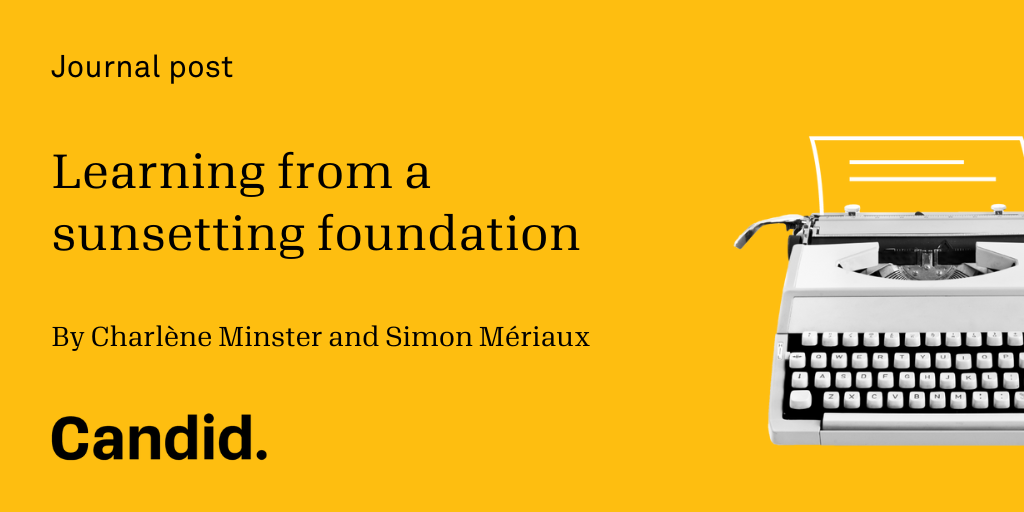The Quest for Impact at Scale
By the time that MAVA closes its doors in 2022, it expects to leave behind a solid legacy of conservation impact on prioritized issues and a vibrant conservation community. In support of this vision, MAVA is spearheading a brave transformation process. It has shifted from a portfolio of loosely related projects and partners to 25 strategically aligned partnerships, each delivering on clear and prioritized outcomes captured in an Outcome Action Plan (OAP).
For us at FOS Europe, it has been an enriching experience to be part of MAVA’s transformation process. Our role is to provide support in the realm of adaptive management using the CMP Open Standards. We work hard to build the capacity, processes and tools needed by partners to adaptively plan, measure, and improve their OAPs, making them more responsive to contextual changes and more effective in their response. One of the core challenges in this process has been to get discussions focused on that difficult question that keeps us awake at night: the question of impact. A difficult question indeed because achieving real change is often hard and painfully slow.
Given that the conservation work is urgent, we can’t afford to not discuss the effectiveness of our work. We must understand whether, for example, our awareness-raising campaign is leading to behavioral change. Or if the research in which we have invested is leading to better management, changing the way in which natural resources are used. What if we are wrong? What if the change is not happening?
The single biggest opportunity related to the OAP-approach, in my mind, is to focus on achieving impact at the scale that really matters. For example, we can work to stop the illegal killing of birds across the Mediterranean Basin, versus just in Italy; we can ensure the sustainable management of small pelagic fish along the entire coast of West Africa, and not just in a particular marine protected area off the coast of Senegal. This more ambitious OAP scale requires OAP-level partnerships to jointly implement conservation actions that are relevant at this scale.
By applying the OAP-approach, the MAVA foundation has brought together knowledgeable, well-connected, relevant partners. Some of these partnerships already existed in part or in whole, while others are brand new. Whatever the case, these partnerships provide a rare opportunity to jointly achieve impact at scale – beyond the scope of control of any individual partner. Partners working on a local level are suddenly part of change processes on the regional level and conversely, partners working on a regional level are suddenly part of processes on the local level. They are challenged to think about their mutual complementarity, outside the boxes of their own organizations, and explore collaboration they could not have imagined a few years ago. The bar is raised as they together pursue a level of change that is not constrained by organizations and their history, but instead has so much more relevance for the ecosystems and species we seek to protect.
This all sounds logical and straightforward, but in practice, the OAP-approach requires a lot of learning and hard work. By now, partners have articulated a common focus, aligned efforts and defined a framework to usefully assess impact. A lot has been invested in defining a common theory of change with clear objectives and a transparent framework (scorecard) in which partners capture evidence of impact. In 2019 and 2020, the OAPs will have the opportunity to put their framework through the ultimate test and assess collective progress and impact in depth during a mid-term evaluation. The MAVA Foundation has taken a remarkable step by empowering partners to do as much of this reflection as possible among themselves – rather than just bringing in an outside evaluator. In my mind, this is transformational: partners that dare to look at their own reflection in the mirror likely will be able to learn what works and what does not, and hence adapt and innovate – traits that are crucial to achieving impact on a scale that matters.
However difficult, I am convinced that if partners discuss, demonstrate, and communicate impact using a common framework and vocabulary, this will help them form stronger and more strategic partnerships and garner more consistent and reliable funding. I suspect that donors, if given the choice, prefer to invest in solid strategic partnerships committed to sharing insights, learning from successes and failures, and working together towards common goals at a scale that matters. My hopes are high that our lessons learned from MAVA’s OAP-approach will help improve our ability to achieve conservation impact at scale.



